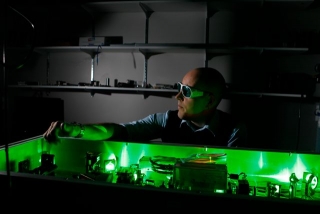Researchers at McGill University have conducted ultrafast electron diffraction experiments to study the semiconductor-metal transition of vanadium dioxide (VO2), during which they observed the reorganizations of the atomic positions of the material and its electron distribution, simultaneously.

This transformation occurs at femtosecond time scales, which is in the range of one millionth of a billionth of a second.
The researchers claim that this was the first time that changes in the atomic-lattice structure of the material could be differentiated from electron relocation during the ultrafast process. They were able to observe the movement of nuclei separately from the activities in the electrons. Further, they also observed the impact that those changes had on the material’s property.
McGill researchers have combined electron microscopy techniques with laser spectroscopy techniques in innovative ways to develop the ultrafast instrumentation that was used for this study. This instrumentation could also be used for study in other disciplines, such as for atomic-level analysis of protein function and for observation of ultrafast transformations that occur during chemical reactions.
In condensed matter physics, the transformation of vanadium dioxide from a semiconductor state into a metallic state has been a significant problem. At low temperature VO2 acts as a semiconductor, and at temperatures of around 60°C it becomes a metal with highly conductive properties. This unique property allows it to be used for heat-sensitive smart coatings and high-speed optical switches.
We’re able to both watch where nuclei go, and separate that from what’s happening with the electrons and, on top of that, we are able to say what impact those structural changes have on the property of the material. That’s what’s really important technologically.
Siwick, an associate professor in the departments of Chemistry and Physics.
Researchers from INRS EMT collaborated in this study, and they contributed high quality vanadium dioxide samples that were just 70nm thick. Extremely thin samples are a prerequisite for making ultrafast electron diffraction measurements. The diffraction patterns of the material structure that were acquired during the experiment provided snapshots at atomic-length-scale at different times during the rearrangement process. When a number of such snapshots were run together, they provided a sort of a movie.
The researchers believe that this development will help answer other questions in molecular physics.
This study has been published in the journal, Science.
References